Looking at the dates on these posts it seems my visits here are about a month apart at the moment. Can't be good. I hope you guys are all keeping well, it's a strange world we're living in at present.
Anyway I got some time to start installing the bushes in the bores on the loader project.
I made a puller that consists of a 1' length of 1" 20tpi UNEF thread on a piece of unknownium bar, and a nut turned from 2" 4140 bar stock with a full 2" of thread and a couple of flats. The threads were single-pointed with a HSS tool. The end of the male part was cross-drilled to take a piece of bar to apply the rotation. This pic is after some use- the 16mm bar was straight when I started.
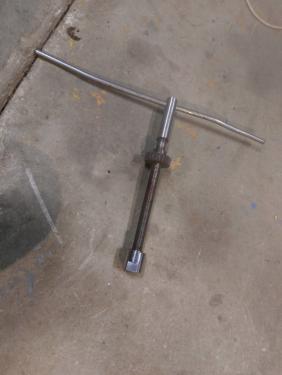
The bushes (4140, OD of each is matched to it's bore plus .0025" interference) have been sitting in the freezer since I hardened them a couple of weeks ago- heated to cherry red in the furnace and quenched in clean oil, they all are hard enough to resist filing.
The insertion of the first candidate was commenced after grinding the perimeter of both faces of the barrel, so the bore was warm and the bush cold. Things started off well enough but predictably got more difficult to turn the screw as the bush went in. It got to the point where I could not turn the handle any more, with the bush only half-way in. Obviously by this time any advantage from the temp difference was history.
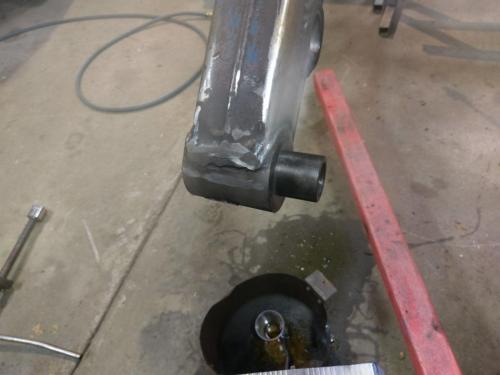
The puller threads were holding up ok at this stage but I needed a way of applying more torque to the screw. I contemplated setting it up behind the lathe again and using the PTO that I made for the line-boring, but I could see the possibility of damaging the lathe gearbox. Eventually I came up with the crazy idea of using the tractor to do the rotating. I cobbled together a gadget that attached to the tractor wheel hub with a protruding drive shaft made from an offcut of PTO driveshaft, i.e. a telescopic triangular section. I think Ben Hur's chariot had something similar.
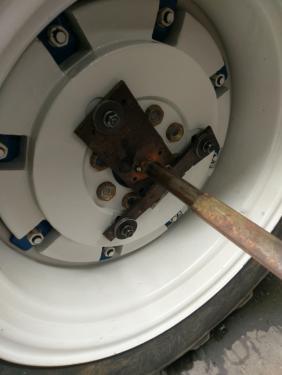
Maneouvered the tractor alongside the loader frame and jacked up both back wheels, slid the drive shaft over the puller. Low range, 1st gear, diff lock engaged, slow idle. Probably making something like 2 RPM.

Amazingly the threads held up. The cast-iron gear I was using as a spacer (first thing I found with the right bore size) didn't hold up so well and had to be swapped out halfway through the task but the bush gradually made it's way into the bore. There was a lot of shuddering and complaining as it got close to home and I lost my nerve when it got to about .030 from the finish line- I think I was pulling some concavity into the disc on the outer end so it had made contact there. I'll call that good for this one, have to make a proper cupped spacer before attempting the others so I can get them all the way home.
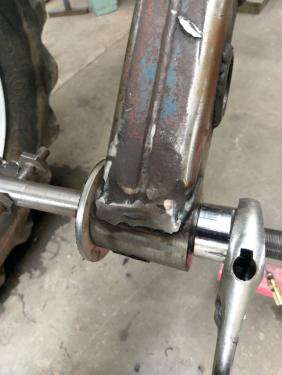
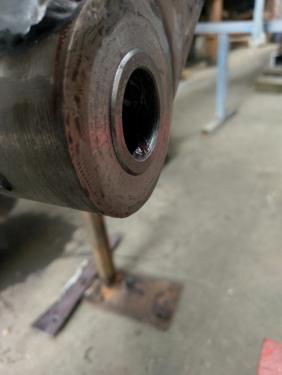
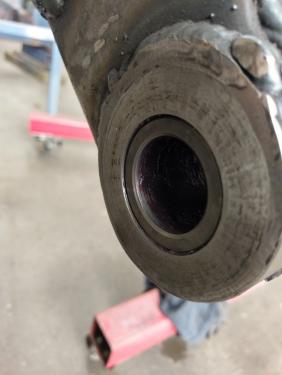
I used reverse gear to relieve the pressure from the puller but all that achieved was destroying the end of the slding shaft. Some modification required there also.
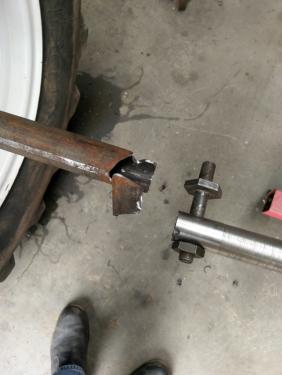
So the 65 horsepower bush insertion tool seems to be a proven concept. A little more development required before I tackle the rest of the bushes.
Lathe (n); a machine tool used in the production of milling machine components.
Milling Machine (n); a machine tool used in the production of lathe components.







